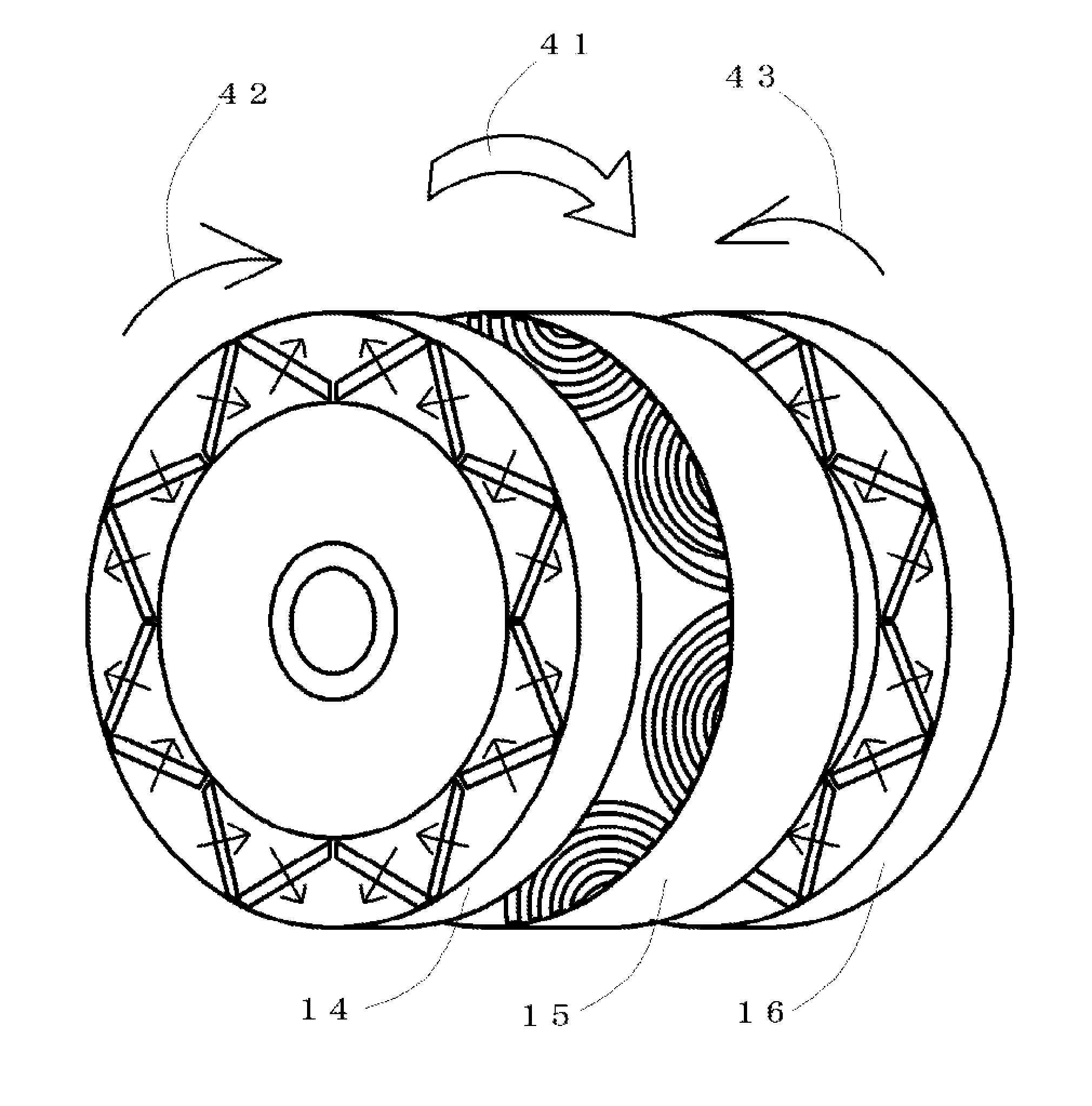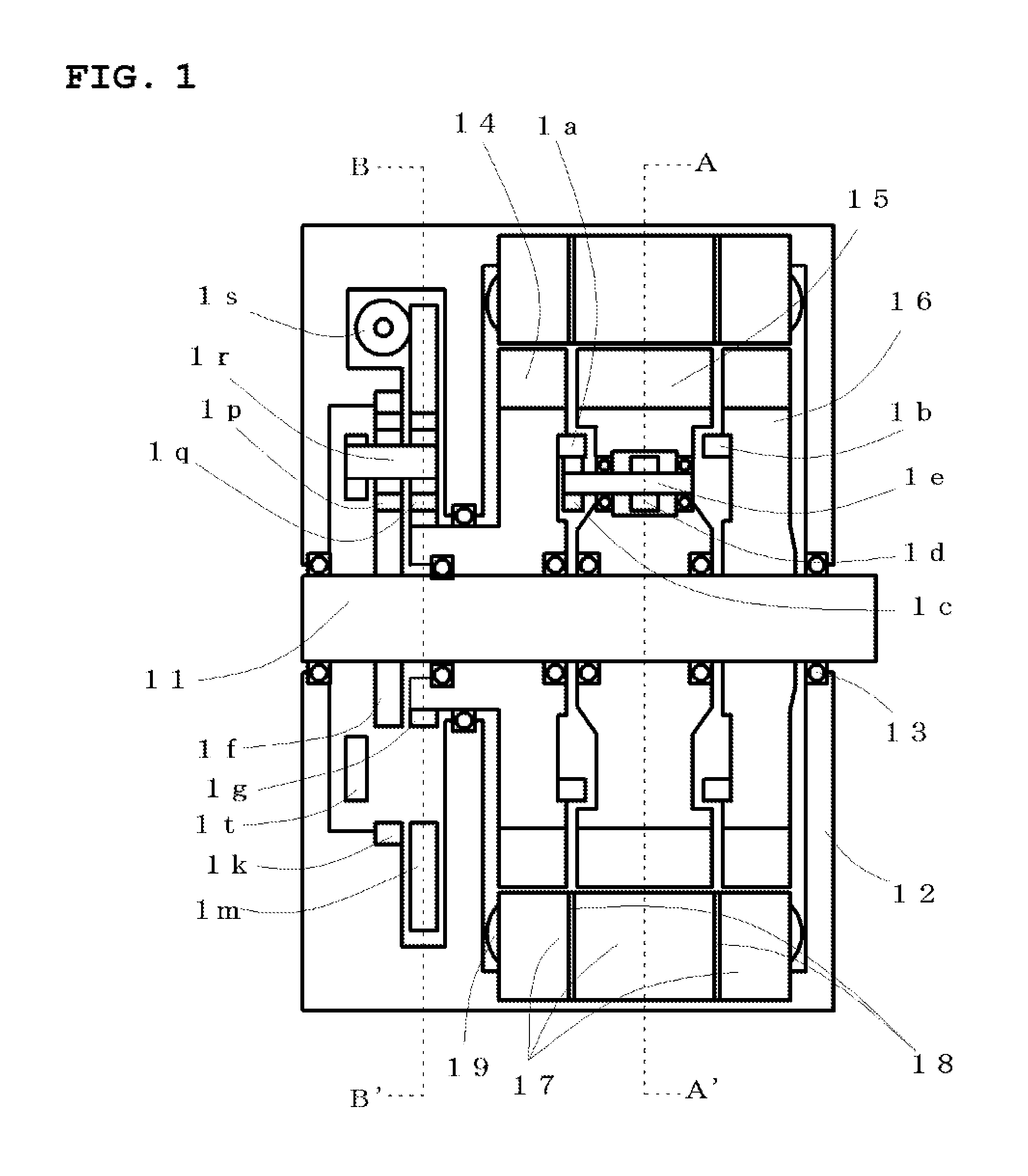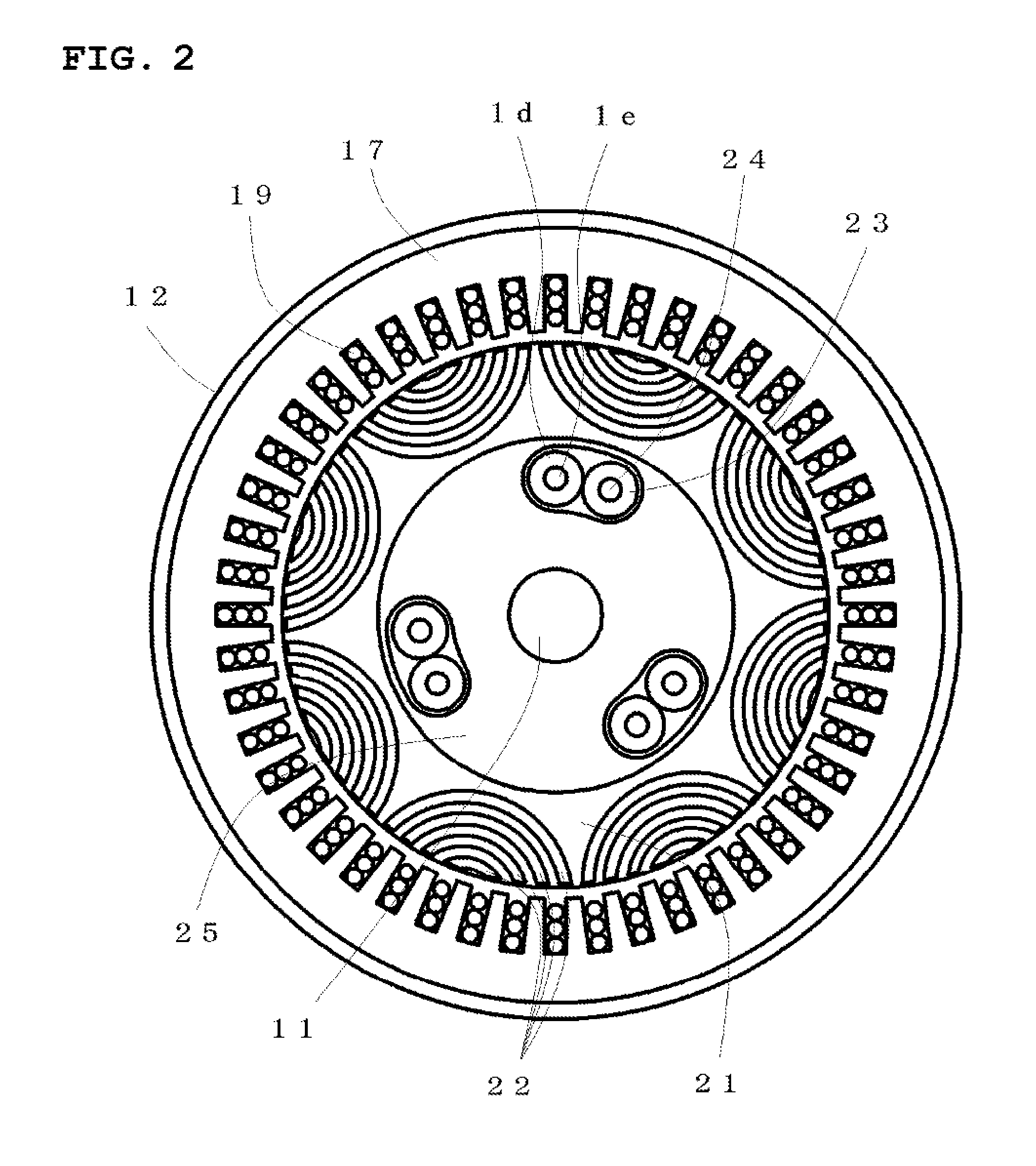Rotating electric machine system and method for controlling induced voltage for the same
- Summary
- Abstract
- Description
- Claims
- Application Information
AI Technical Summary
Benefits of technology
Problems solved by technology
Method used
Image
Examples
first embodiment
[0035]The rotating electric machine system according to a first embodiment of the present invention will be explained by using FIGS. 1 to 10. Three rotors are opposite to an armature as a first rotor, a second rotor and a third rotor. The first rotor and the second rotor are displaced to the third rotor in the circumferential direction using a planetary gear mechanism. The first rotor and the third rotor are magnet excited, and the second rotor is configured so as to obtain the rotational force by the reluctance torque.
[0036]FIG. 1 shows a longitudinal sectional view of the embodiment in which the present disclosure is applied to the rotating electric machine apparatus of an inner rotor structure, a rotating shaft 11 is supported rotatably by a housing 12 through bearings 13. The first rotor 14 and the second rotor 15 are displaceably held on the rotating shaft 11 through bearings, the third rotor 16 is fixed to the rotating shaft 11. Region where the first rotor 14 and the second r...
second embodiment
[0071]The rotating electric machine system according to a second embodiment of the present invention will be explained by using FIGS. 12 to 18. Magnet excited three rotors are opposite to an armature as a first rotor, a second rotor and a third rotor. The first rotor and the second rotor are displaced against the third rotor exploiting rotational force, regenerative braking force. The first rotor and the third rotor are configured such that the reluctance torque may not appear, the second rotor is configured to be utilizing reluctance torque.
[0072]FIG. 12 shows a longitudinal sectional view of the embodiment in which the present disclosure is applied to a rotating electric machine apparatus of an inner rotor structure, a rotating shaft 11 is supported rotatably by a housing 121 through bearings 13. The first rotor 122 and the second rotor 123 are displaceably held on the rotating shaft 11 through bearings, the third rotor 124 is fixed to the rotating shaft 11. Region where the first...
PUM
 Login to View More
Login to View More Abstract
Description
Claims
Application Information
 Login to View More
Login to View More - R&D
- Intellectual Property
- Life Sciences
- Materials
- Tech Scout
- Unparalleled Data Quality
- Higher Quality Content
- 60% Fewer Hallucinations
Browse by: Latest US Patents, China's latest patents, Technical Efficacy Thesaurus, Application Domain, Technology Topic, Popular Technical Reports.
© 2025 PatSnap. All rights reserved.Legal|Privacy policy|Modern Slavery Act Transparency Statement|Sitemap|About US| Contact US: help@patsnap.com



